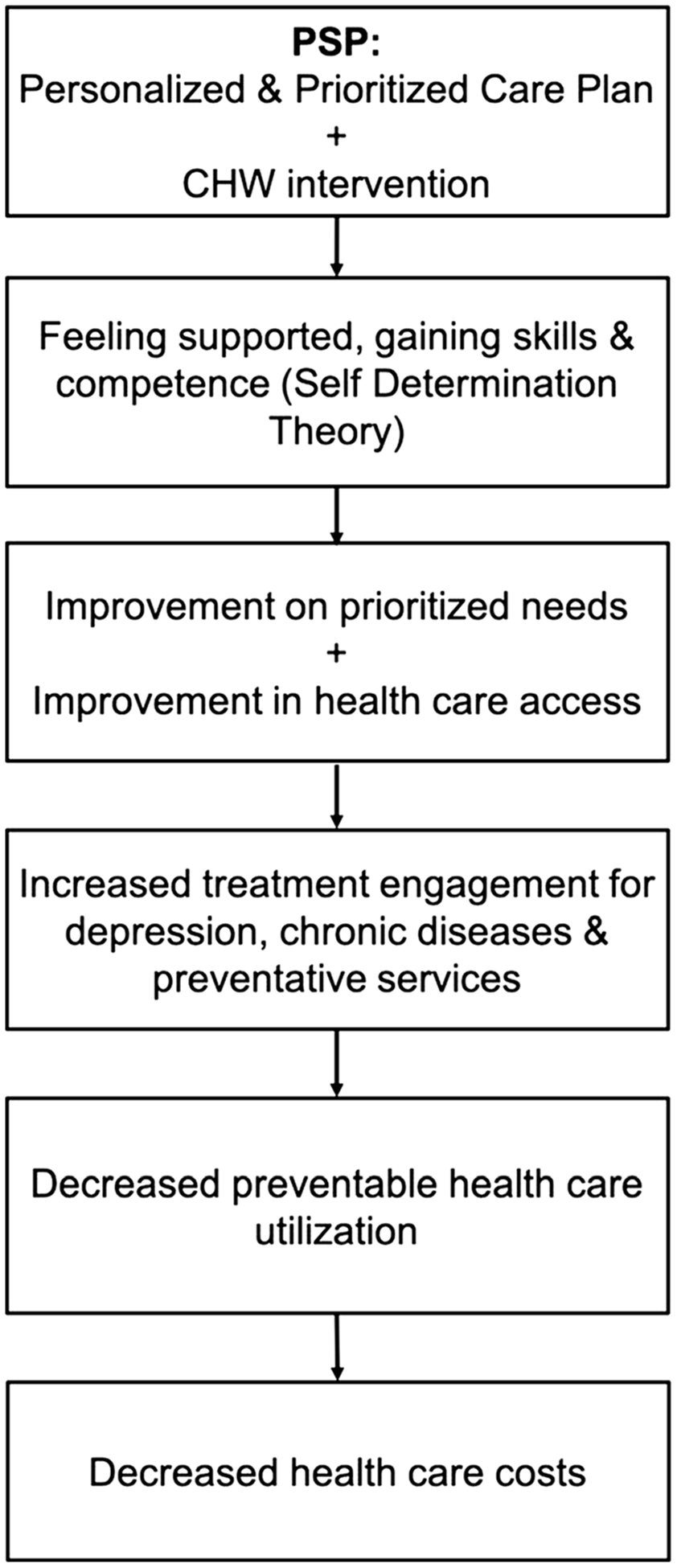Fig. 1.

Hypothesized model for PSP intervention. Boxes correspond to each step in the model, and arrows between connect one step to the next. The PSP intervention provides a personalized care plan that is prioritized for the patient’s needs, as well as a CHW who provides health care navigation and both logistical and peer support using the self-determination theory, or “SDT” (Ryan and Deci 2000). SDT allows patients to feel supported, gaining skills and competence, leading to improvement in their prioritized needs, as well as the CHW interventions that improve access to health care services. This leads to increased engagement in treatment for depression, chronic diseases, and preventative services, which decreases preventable health care use and decreased costs
